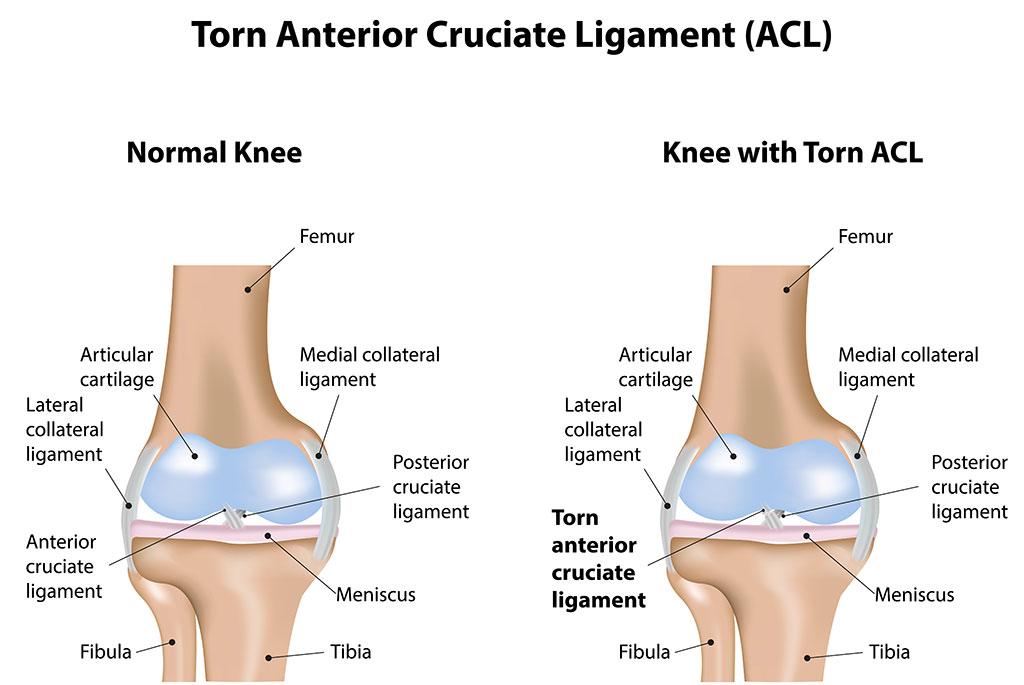Recovery from an anterior cruciate ligament (ACL) tear is a critical concern for athletes and active individuals alike, impacting both their physical health and daily activities. UCHealth, a leading healthcare provider, offers expert insights into the timeline and factors influencing recovery from this common yet serious knee injury. Understanding how long it takes to regain strength and mobility after an ACL tear is essential for patients, coaches, and medical professionals aiming to navigate the road to rehabilitation effectively. This article breaks down the typical recovery duration and the key elements that can affect the healing process, shedding light on what patients can expect following an ACL injury.
Recovery Timeline Explained Insights from UCHealth Experts
Recovery from an ACL tear varies widely depending on the severity of the injury and the treatment approach. UCHealth experts emphasize that while nonsurgical approaches may suit minor tears, most patients opt for reconstructive surgery to restore stability and function. Post-surgery, the initial phase focuses on managing pain, reducing swelling, and regaining a range of motion. This critical stage typically lasts 2 to 4 weeks, during which physical therapy begins gently to prevent stiffness and muscle loss.
Progressing beyond this phase, patients enter a structured rehabilitation program that gradually increases strength, balance, and endurance. According to UCHealth specialists, most individuals return to light activities around 3 to 6 months post-injury; however, full return to high-impact sports or strenuous work may take up to 9 to 12 months. Below is a simplified timeline to illustrate common recovery milestones:
| Recovery Stage | Timeframe | Key Focus |
|---|---|---|
| Initial Healing | 0-4 weeks | Pain control & mobility |
| Strengthening & Rehab | 4-12 weeks | Muscle rebuilding & balance |
| Functional Training | 3-6 months | Light activities & endurance |
| Full Activity Return | 9-12 months | Sports & high-impact work |
- Individual variability: Age, health, and rehab commitment affect recovery speed.
- Physical therapy: Consistency is crucial for restoring normal knee function.
- Medical follow-ups: Regular assessments help prevent setbacks.
Factors Influencing Recovery Duration Age Activity Level and Injury Severity
Recovery time after an ACL tear varies significantly based on several key factors. Age plays a crucial role, with younger patients generally experiencing quicker healing and a smoother rehabilitation process. In contrast, older individuals may require extended recovery periods due to naturally slower tissue regeneration and potential pre-existing joint conditions. Meanwhile, a person’s activity level prior to injury strongly influences the timeline. Athletes and highly active individuals often embark on intensive physical therapy, aiming to regain full function and return to competitive sports, which can extend the recovery process but often leads to better long-term joint stability.
Another pivotal element is the severity of the ACL injury. Partial tears might heal with conservative treatment and bracing in a few months, whereas complete ruptures typically necessitate surgical intervention followed by extensive rehabilitation spanning six to twelve months. Here’s a breakdown of how these variables interplay:
| Factor | Impact on Recovery | Estimated Timeline |
|---|---|---|
| Age | Younger patients heal faster due to better tissue regeneration | 6-9 months (under 35 years) |
| Activity Level | Higher activity demands longer rehab to restore full function | 9-12 months for competitive athletes |
| Injury Severity | Partial tears recover more quickly than complete ruptures | 3-6 months (partial), 6-12 months (complete) |
- Lifestyle adjustments can shorten or prolong recovery depending on adherence.
- Rehabilitation intensity and consistency impact final outcomes.
- Additional injuries such as meniscus damage may extend healing time.
Effective Rehabilitation Strategies Recommended by UCHealth Specialists
UCHealth specialists emphasize a tailored, multidisciplinary approach to maximize recovery and minimize setbacks following an ACL tear. Central to this methodology is early mobilization combined with carefully monitored physical therapy, which helps restore joint function while protecting the healing ligament. Patients are guided through progressive strength training that targets the quadriceps, hamstrings, and core muscles, crucial for stabilizing the knee. Additionally, techniques such as neuromuscular re-education are employed to retrain movement patterns and reduce the risk of future injury.
To enhance outcomes, UCHealth’s rehabilitation protocols integrate modern technology and patient-specific assessments. Below is a summary of key rehab components frequently recommended by their specialists:
- Phase 1: Pain management, swelling reduction, and gentle range-of-motion exercises
- Phase 2: Gradual weight-bearing exercises with increased muscle engagement
- Phase 3: Functional training including balance, agility drills, and sport-specific movements
- Phase 4: Full return-to-sport evaluation and injury prevention education
| Rehabilitation Phase | Focus Area | Expected Duration |
|---|---|---|
| Inflammation Control | Swelling & Pain | 1-2 weeks |
| Strength & Range of Motion | Muscle Activation | 3-6 weeks |
| Functional Training | Balance & Agility | 6-12 weeks |
| Sport Readiness | Performance Testing | 3-6 months |
Future Outlook
In summary, recovery time from an ACL tear can vary significantly depending on the severity of the injury, treatment approach, and individual patient factors. While some may return to normal activities within a few months, others-particularly athletes undergoing surgery-often require six to nine months or more for full rehabilitation. Understanding these timelines is crucial for setting realistic expectations and ensuring a safe return to daily life or sports. UCHealth continues to emphasize personalized care and advanced rehabilitation techniques to support patients on their road to recovery.

